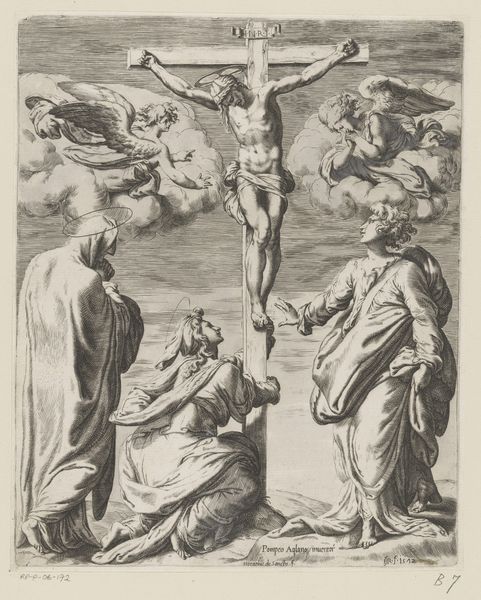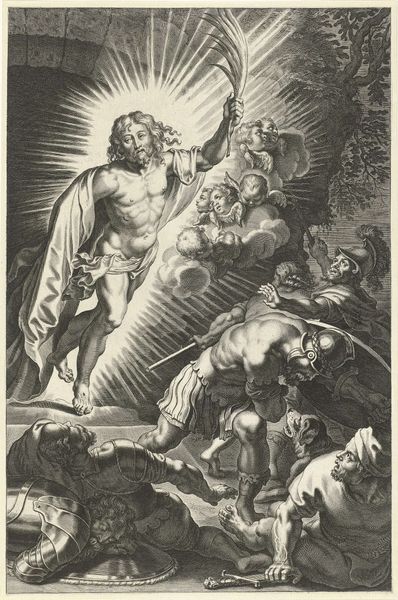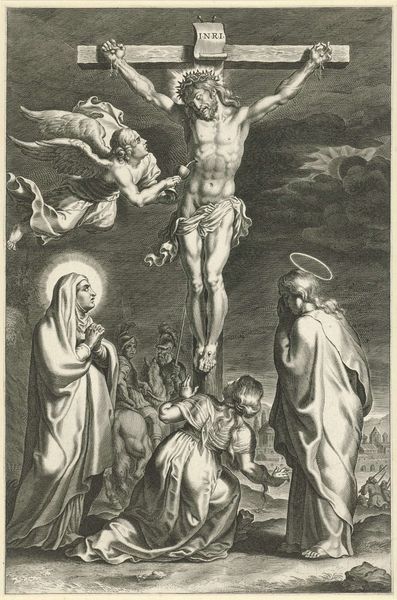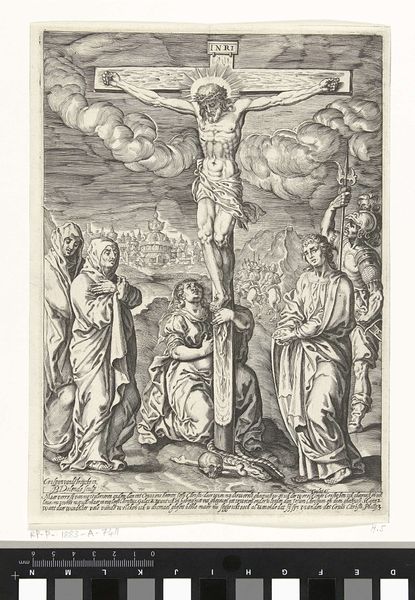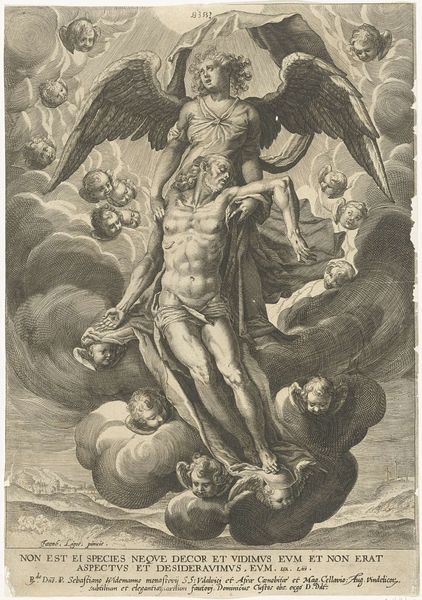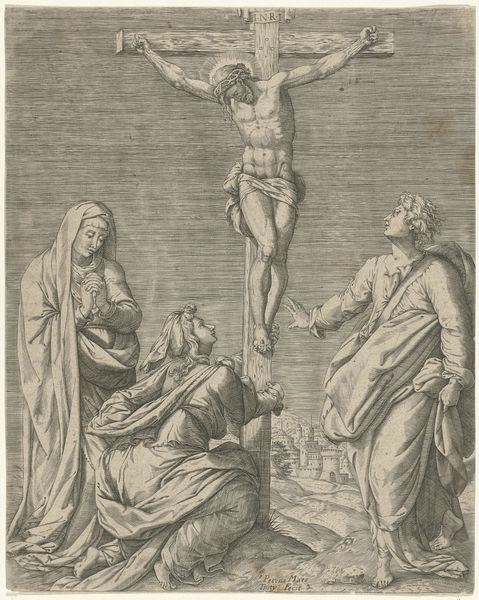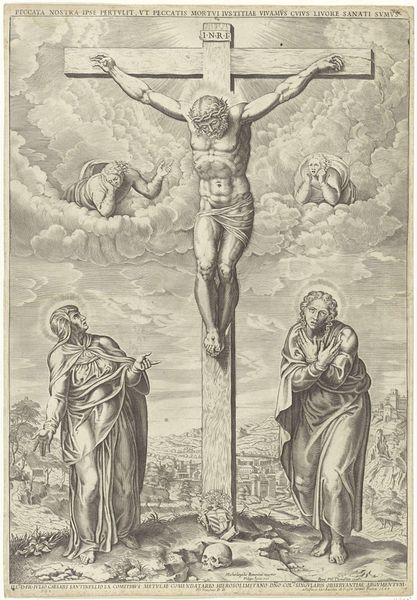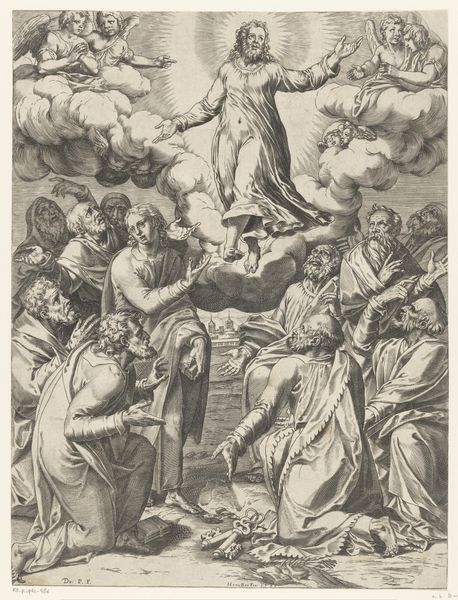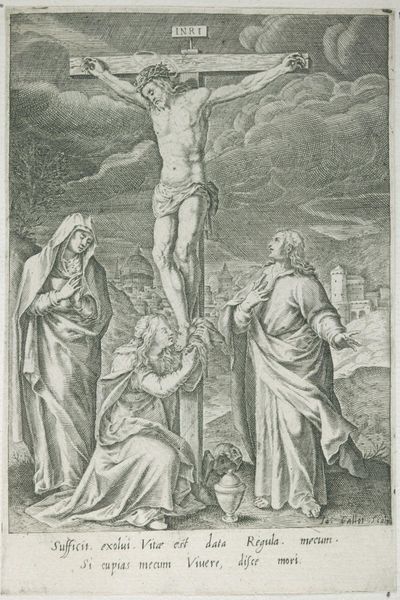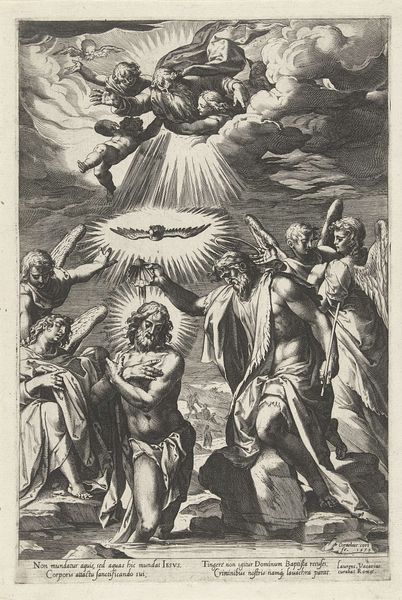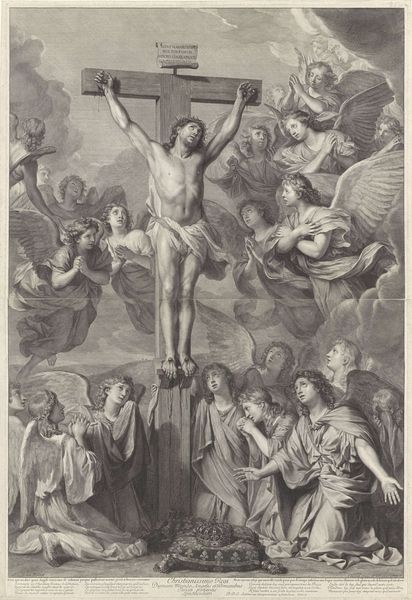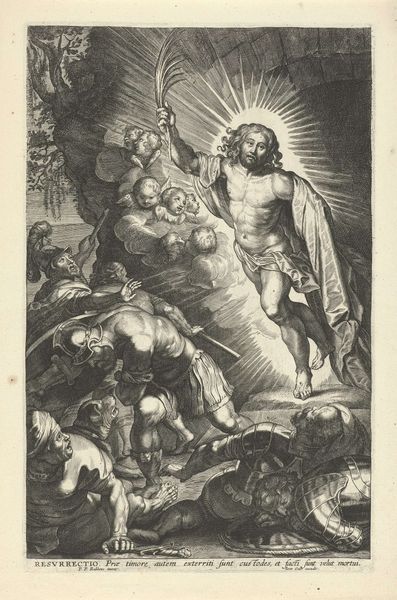
print, engraving
#
allegory
#
baroque
# print
#
old engraving style
#
figuration
#
line
#
history-painting
#
engraving
#
christ
Dimensions: height 282 mm, width 205 mm
Copyright: Rijks Museum: Open Domain
Curator: Here, we're looking at an engraving entitled "Resurrection of Christ." Its creation is attributed to an anonymous artist sometime between 1590 and 1638. Editor: Immediately, the stark contrast between light and dark jumps out. It creates a real sense of drama, a Baroque flair perhaps? Curator: Definitely. This engraving, rendered entirely in line, depicts Christ ascending from his tomb. Note the soldiers recoiling in the lower-left, stunned by the event, while angels flank the risen Christ. This visual arrangement tells a powerful story about divine intervention and triumph over earthly forces. Consider the socio-political power held by the church and the way they constructed this narrative of triumph over adversaries. Editor: It’s striking how Christ is centered—almost forcefully pulled upward, away from the tomb and toward these almost ecstatic angelic figures above. There's a kind of tension. Who does that ascent really benefit, given all those prostrate and clearly terrorized guards? It feels important to analyze who this "triumph" is really for, and how such imagery could be exploited by dominant forces at the time. It can feel a bit... exploitative of those already on the fringes, you know? Curator: These engravings played a critical role in disseminating religious ideas, reaching broad audiences at a time when access to imagery and information was often controlled by the elite. And regarding your comment: a Baroque painting showing violence might depict it heroically and from the victor’s perspective, but I can see how the focus on an act of dominance in times of inequality is fraught. Editor: Right, because while depicting religious narrative may indeed provide a crucial element of comfort to people, that comfort is never apolitical—it’s so important to dissect whose comfort and what assumptions such religious works uphold. Curator: Agreed, we mustn't ignore the impact and implications inherent in its time and our present. Looking closely at the craftsmanship, particularly the intricate lines and details, and coupling that with historical knowledge of how and for what purpose they might have been created really bring history to life, no pun intended. Editor: Absolutely. Examining the power dynamics inherent in the scene, recognizing both its artistry and potential societal ramifications, brings us closer to a complete understanding of its place and influence.
Comments
No comments
Be the first to comment and join the conversation on the ultimate creative platform.
